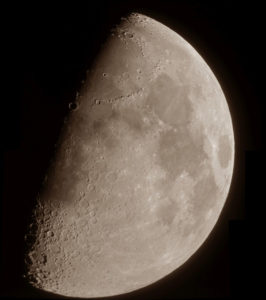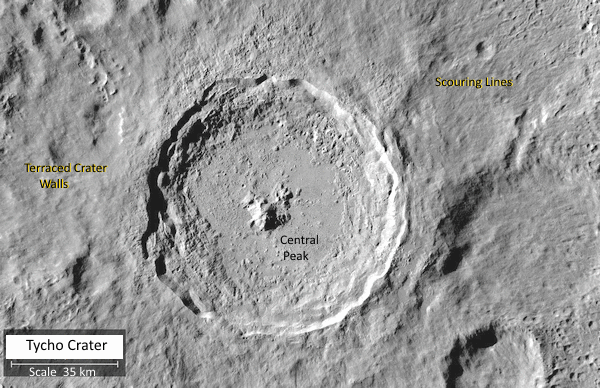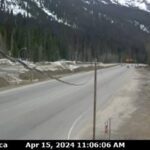Home »

A Super Moon and a Lunar Eclipse May 26
By Rick Nowell
On Wednesday, May 26, a super moon will occur. A super Moon is when a full Moon occurs when the Moon is at its closest point in its orbit to the Earth at its perigee at 360,000km. The Moon appears 12% larger compared to when it’s farthest away at 405,000 km.

The Moon will also pass through the Earth’s shadow. The full lunar eclipse will occur at 5:11 a.m., in the early morning hours before sunrise on Wednesday, May 26.
There are three stages: first the penumbral eclipse will begin at 2:47 a.m. The Moon will slowly move from west to the east through the Earth’s shadow cone, moving to the left in its orbit. You will see the circular edge of the Earth’s shadow move slowly left along the face of the Moon.
Next the partial eclipse (when the Moon moves into the Earths darker umbra shadow) begins at 3:45 a.m.
Finally, the Moon goes entirely into the umbra shadow at 5:11 a.m., only lasting for 15 minutes. This is when it will darken and turn reddish orange. I took this information from here.
The umbra is the dark central shadow cone cast by the Earth, about 2.5 times the size of the Moon. The penumbra is the half shadow ring that surrounds the central cone, about the size of the Moon. And at the centre of the umbra, the Earth’s atmosphere layer casts a red glow, like a sunset. The atmosphere absorbs or scatters the other colours, and just red gets through.
Last month the full Moon was higher in the southern sky than usual and passed above the Earth’s shadow. Next month the full Moon will be lower in the sky and will pass below the Earth’s shadow. You may have noticed the Moon high in the sky or low on the southern horizon. The Moon will stay below the Earth’s shadow all summer and fall, and will move back into the shadow in November 2021 for a partial eclipse.
For people with their own telescopes, here are a few of the interesting spots on the Moon to find. Even 15x binoculars with a tripod to hold it steady would work, or a small telescope to see these major features.
Below I’ll describe what’s interesting as you move your telescope along the centre from the top, middle and bottom.

Mare Imbrium, the sea of rains, is at the top of the Moon. Note the rings of mountains, the Apennines at bottom right and the Alps at top. Valles Alpes and Plato Crater shown in this map. The mountains surrounding Mare Imbrium are rich in heavy metals such as iron, thorium and uranium. Concentrated deposits that could be used for radioactive fuel are found in 34 regions, and at craters such as Aristillas, Aristarchus, T. Mayer, Kepler and Lalande. Other heavy metals from asteroid core impacts such as nickel, iron, gold, iridium and platinum are imbedded at twenty other sites. Water ice exists at both polar regions. Private companies are already planning how to mine these resources.
Look back at the half-lit photo of the Moon: can you spot Plato Crater at top, along the shadow edge? Plato Crater was blasted into part of the Alpes by an asteroid rock and formed an unbroken ring wall. The wall would have dammed out lava from Mare Imbrium, but lava must have flooded up from beneath the crater to make the smooth plain inside around 3.5 billion years ago. It has one of the darkest and smoothest crater floors. Polish astronomer Johannes Hevelius called it the “Greater Black Lake.”
On rare occasions telescopes see Transient Lunar Phenomena such as clouds coming from the central peak for 3 to 10 seconds in duration. There is controversy about what it might be caused by.
 Valles Alpes: Beside Plato crater, there is a 125km long fault that cuts horizontally through the Alpes called Vallis Alpes. Can you spot the Valles Alpes in the half-lit photo? Geologically this is a graben fault where a block section of crust dropped down.
Valles Alpes: Beside Plato crater, there is a 125km long fault that cuts horizontally through the Alpes called Vallis Alpes. Can you spot the Valles Alpes in the half-lit photo? Geologically this is a graben fault where a block section of crust dropped down.
Alphonsus: The middle of my half-lit photo shows these three craters, with Alphonsus at center. Inside Alphonsus crater in the middle, can you spot the dark spots where the volcanic vents are, in the half-lit photo or with your own telescope?
Alphonsus Crater is about 120 km in diameter. The crater floor inside has a central peak and three dark halo craters along the right edge and another on the left, produced by explosive volcanic eruptions from the lunar interior. Although the Moon hasn’t seen volcanism for a billion years, on rare occasions gases still puff from these for two to 30 seconds at a time.
Rupes Recta: The half-lit photo also shows a dark line shadow of Rupes Recta. Rupes Recta: (latin for straight cliff) is a fault line along the floor of a lava flooded crater. It lies in a fourth crater to the bottom left of Alphonsus. This is a popular target for amateur astronomers. Although it is difficult to see during a full moon.
When side-lit (Lunar morning) Rupes Recta casts a wide shadow that gives it the appearance of a steep cliff. The fault is 110 km long, mostly two km wide and 240 to 300 m high. Although it looks like a vertical cliff the slope is fairly shallow.
 Tycho Crater: The photo near the bottom center of the Moon, shows Tycho crater. During a full moon, the streaks of white stand out plainly white against dark gray.
Tycho Crater: The photo near the bottom center of the Moon, shows Tycho crater. During a full moon, the streaks of white stand out plainly white against dark gray.
Rays: All bottom rays lead to Tycho. The Tycho impact threw out the huge whitish ray structure. Tycho is recent, just 108 million years old. Newer craters still have the bright crushed rock visible that was flung out when the impact occurred. Created by an asteroid impacting at about a 35° angle from the south-southwest, the crater’s rays mostly splash up to the right towards Mare Nectaris. The surface in that direction is scoured and eroded by hundreds of small secondary craters, while uprange, the western area remains smoother.
The central peak is two km high. Note the flat floor, terraced walls and secondary craters. A blanket of lighter material surrounds the 85 km wide crater rim, mostly glassy impact melted rock. Tycho’s central peak and floor is also covered in a thin sheet of melted rock. This molten rock was heated by the impact so that it liquified and flowed across the floor and splashed up on the walls, the central peak and the surroundings.
The weather forecast isn’t very promising. Good luck on the clouds parting and seeing the eclipse.
Lead image: This is the photo I took of the last total lunar eclipse of 27 Sep 2015 in Cranbrook. Images submitted by Rick Nowell
– Rick Nowell is Physics Lab Tech at College of the Rockies







